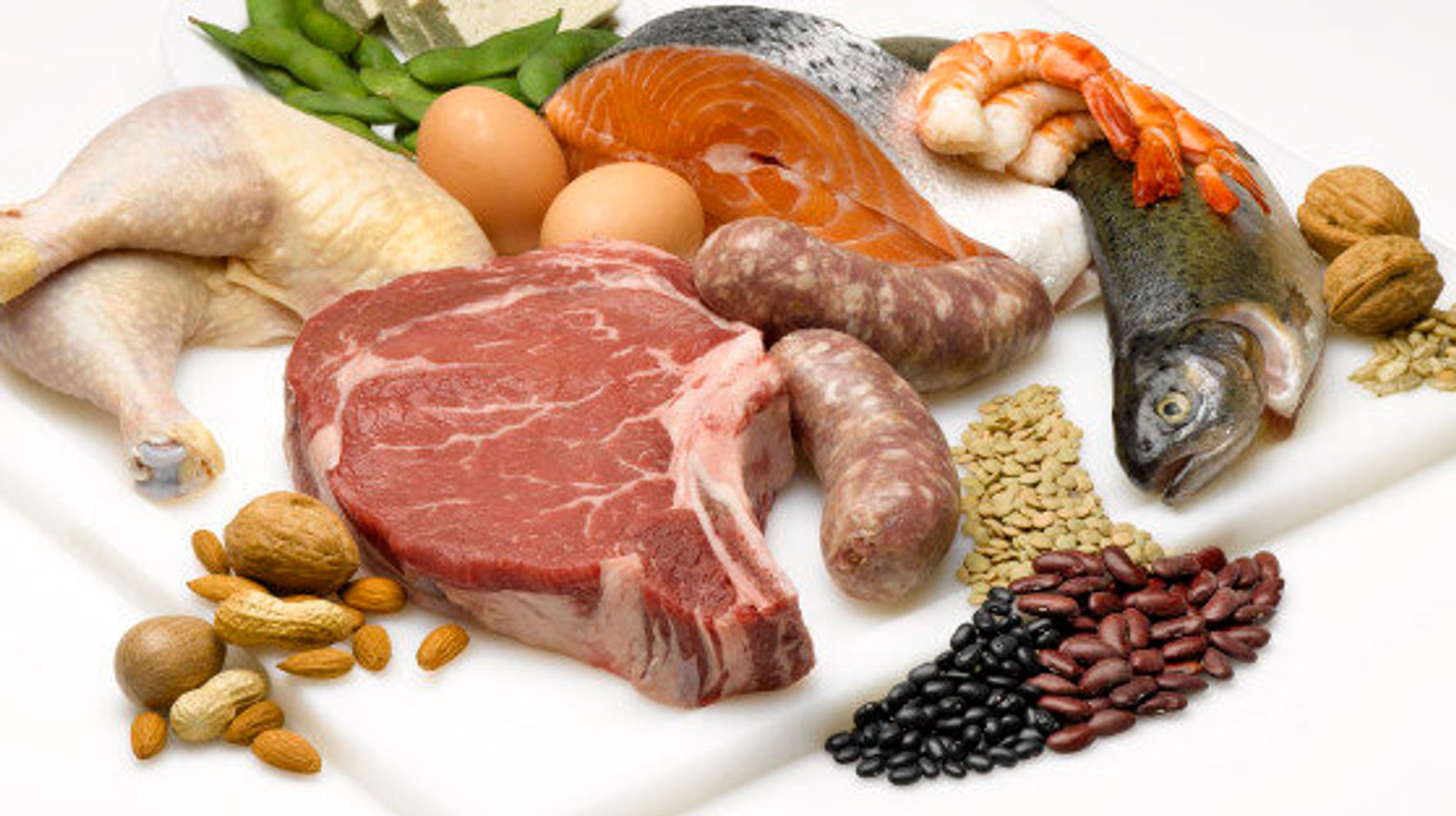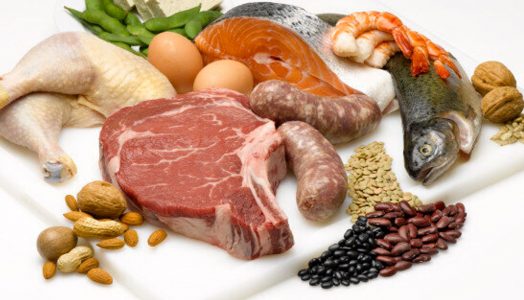Iron deficiency is the most common nutritional deficiency in the U.S. (and the world) according to the CDC, with almost 10% of women being considered iron deficient! Iron is an essential nutrient that helps us perform many functions throughout our body every single day. Iron helps to transport oxygen throughout the blood. Because the mineral is so important to sustaining life many foods are already fortified with iron. Supplementation is another means of ensuring adequate iron consumption. Lakartidningen notes iron supplementation is used to treat inflammatory bowel disease. Iron also prevents anemia, is required for the production of red blood cells, has anti-inflammatory properties.
An iron deficiency is most commonly linked to the development of anemia, which is a condition when there’s a lack of healthy red blood cells being produced. Iron helps metabolize proteins and plays a role in the production of hemoglobin and red blood cells, helping to prevent anemia from forming.
According to the National Institutes of Health (NIH) National Heart, Lung, and Blood Institute:
“Iron-deficiency anemia is a common, easily treated condition that occurs if you don’t have enough iron in your body. Low iron levels usually are due to blood loss, poor diet, or an inability to absorb enough iron from food.” (2)
Iron Deficiency Signs and Symptoms
Iron is needed to produce hemoglobin, a type of protein found in red blood cells that has the role of carrying oxygen from your lungs and transporting it throughout your body to your cells. An iron deficiency can mean that you aren’t able to produce enough oxygen-carrying red blood cells − therefore your body struggles to transport oxygen to your brain, tissues, muscles and cells, leaving you feeling exhausted and weak.
Aside from preventing anemia, iron is a nutrient needed to maintain general well-being, energy and a healthy metabolism because it helps support overall cellular health and is involved in many enzyme functions. Iron plays a part in many enzyme reactions that help our bodies to digest foods and absorb nutrients. These reactions also balance hormone levels and support brain, heart, skin, hair, nail and metabolic health. (3)
Most of the 3–4 grams of elemental iron present within our body is in the form of hemoglobin. The remaining iron is stored in the liver, spleen and bone marrow, or is located in our muscle tissue’s myoglobin. (4)
An iron deficiency can lead to the following conditions:
- Anemia
- Chronic fatigue or low energy
- Pale or yellowing of the skin
- Shortness of breath
- Abnormal heartbeats
- Signs of a hormone imbalance
- Trouble exercising
- Muscle weakness
- Changes in appetite
- Trouble getting good sleep
- Changes in weight
- Cough
- Trouble concentrating, learning, remembering things
- Sores on your mouth or tongue
- Mood changes
- And basically any other normal symptoms of being very tired and fatigued
Women Need More to Prevent an Iron Deficiency Than Men Do
The amount of iron that someone needs daily in order to prevent an iron deficiency varies a lot depending on their age and gender. Women need more iron than men do because they lose a certain amount of iron during their normal menstrual cycle each month. (5)
Starting at around the time of adolescence when a woman begins having her menstrual cycle, her daily needs of iron increases, but then the level will decrease once again as the woman reaches menopause. Women who are between the ages of 19 to 50 need to get the most iron of any group − about 18 milligrams of iron each day. However, men of the same age can get away with having much less and will still be at a lower risk for having an iron deficiency. Men need just about 8 miligrams of iron daily. (6)
There are other risk factors that also put you at a higher risk for an iron deficiency. The most common reasons for an iron deficiency include:
- If you follow a vegetarian or vegan diet (which doesn’t include any animal sources of protein that are naturally high in iron)
- If you exercise a lot (which sometimes can damage red blood cells)
- If you’re pregnant or breastfeeding
- If you’ve ever had kidney failure
- If you’re undergoing, or have undergone, dialysis treatment, which can remove iron from the body
- If you’ve had ulcers in the past
- If you have any known gastrointestinal disorders that can limit your ability to absorb nutrients, such as celiac disease, Crohn’s disease or ulcerative colitis
- If you take a high amount of antacids, since these contain calcium that can prevent iron absorption
- If you’ve recently had surgery or lost blood for any reason, like donating blood
Luckily, an iron deficiency is usually pretty easy to identify with a simple blood test done at your doctor’s office, called a serum ferritin test. In fact, some people find out that they may have an iron deficiency when they attempt to donate blood at a blood donation center and the required screening test reveals that their iron levels are low. It’s recommended you get your blood checked on a regular basis to see if you need to increase your iron intake, especially if you’re pregnant, a vegetarian or have a digestive disorder.
Recommended Daily Amount of Iron
The amount of iron you need changes based on your age. According to the US Office of Disease Prevention and Health Promotion (ODPHP), the recommended daily amounts of iron are as follows: (7)
- Children ages 1 to 3: 7 milligrams
- Children ages 4 to 8: 10 milligrams
- Children ages 9 to 13: 8 milligrams
- Women ages 14 to 18: 15 milligrams
- Men ages 14 to 18: 11 milligrams
- Women ages 19 to 50: 18 milligrams
- Pregnant and lactating women: 27 milligrams
- Men ages 19+: 8 milligrams
- Women ages 51+: 8 milligrams
As you’ll notice, toddlers need more iron than children do because iron supports the process of growth and cognitive development. It can be hard for young children to get enough iron from their diet alone, especially if they are “picky eaters” — so having a blood test done during a toddler’s yearly check-up can identify an iron deficiency before it becomes a bigger problem.
Breast milk is believed to contain highly bioavailable iron, but in amounts that are not sufficient to meet the needs of infants older than 4–6 months. It’s best that babies begin to eat solid foods that are naturally rich in bioavailable iron, or to eat iron-fortified foods or formula as soon as they are able to.
Women who are pregnant may need more iron than the general population, so it’s recommended that they take iron as part of a pre-natal vitamin complex. (8) However, this correlation isn’t very clear; unless a woman already has anemia due to iron deficiency, taking additional iron in the form of supplements seems to have no long-term effect on birth outcomes. (9)
Finally, anyone who has lost blood due to a recent surgery may want to supplement with iron in order to prevent signs of an iron deficiency.
How You Can Prevent an Iron Deficiency
When it comes to getting enough absorbable iron from food sources, there are several things to consider:
- Animal foods contain a type of iron called heme iron, which is more absorbable than iron found in plant foods, called non-heme iron.
- When you eat different foods together, they can interact to either boost the body’s ability to absorb iron, or they can do the opposite and make it harder to absorb the iron present in the foods.
- The NIH estimates that Americans get about 10–15 percent of their iron intake from heme iron, while the rest comes from non-heme iron. Because non-heme iron is less absorbable, this may be one reason why iron deficiency is so common.
If you are a vegetarian or vegan, you’ll want to be careful about getting enough iron and may want to consider taking an iron supplement. This is because the type of iron found in plant foods is known to not be as absorbable as animal sources of iron are. Iron from meat, poultry and fish − heme iron − is absorbed two to three times more efficiently than iron from plants (non-heme iron) is absorbed.
The amount of iron absorbed in the body also depends on the other types of foods eaten at the same meal. Foods like meat or fish that contain the animal source of iron (heme-iron) enhance the body’s ability to absorb the type of iron present in plant foods (non-heme iron).
Iron can be found in plant foods such as spinach and beans, but when you eat these foods along with an animal source of iron, your body is able to use the iron better. Because foods containing vitamin C can also enhance non-heme iron absorption, this is another useful way for vegetarian and vegans to increase their iron stores.
There are also substances found naturally in some foods and drinks that decrease the body’s ability to absorb iron. Foods that contain chemical compounds like polyphenols, phytates, or calcium make it harder for the body to absorb and store iron. These can be found in such foods as tea, coffee, whole grains, legumes, nuts, seeds and dairy products.
According to the NIH, “the richest sources of heme iron in the diet include lean meat and seafood. Dietary sources of non-heme iron include nuts, beans, vegetables and fortified grain products. In the United States, about half of dietary iron comes from bread, cereal and other grain products.”
Best Foods to Prevent Iron Deficiency
It may seem complicated to pair the right foods together in order to absorb iron in the best way, but if you eat a varied diet overall that includes plenty of whole foods, you’re unlikely to need more iron.
So in general, try to eat a varied, whole-foods based diet that includes good sources of iron like grass-fed meat products, organic free-range poultry, cage-free eggs, organic (ideally unpasteurized) dairy products like raw milk, plenty of different fruits and vegetables, beans, and, on occasion, whole grains.
Also, try to eat foods in combinations that help your body to absorb iron better. For example, you can pair a food that is naturally high in vitamin C (like leafy greens or citrus fruits) with beans to make a better source of iron, since vitamin C helps your body absorb the non-heme iron.
You can include some of these high vitamin C foods — guava, red bell pepper, kiwi, oranges, grapefruits, green peppers, blueberries, all cruciferous vegetables like Brussel sprouts or broccoli, cantaloupe, and pea pods — in your meals in order to increase your absorption of iron.
Here are the 12 best food sources of naturally occurring iron that can help you prevent an iron deficiency (keep in mind that the RDA is very different for each person, with adult males needing 8 milligrams daily and adult females prior to menopause needing 18 milligrams):
- Liver (from beef) (10) — 4 ounces: 5.5 milligrams
- White beans (11) — 1 cup cooked: 6.6 milligrams
- Lentils (12) — 1 cup cooked: 6.5 milligrams
- Spinach (13) — 1 cup cooked: 6.4 milligrams
- Kidney beans (14) —1 cup cooked: 3.9 milligrams
- Chickpeas (15) — 1 cup cooked: 4.7 milligrams
- Duck (16)— half of one breast: 3.5 milligrams
- Sardines (17) — 1 can/3.75 ounces: 2.7 milligrams
- Grass-Fed Beef (18) — 3 ounces: 1.7 milligrams
- Lamb (19) — 3 ounces: 1.3 milligrams
- Blackstrap molasses (20) — 1 tablespoon: 0.9 milligrams
- Pumpkin Seeds (21) — 1/2 cup: 1 milligram
Continued on next page…




